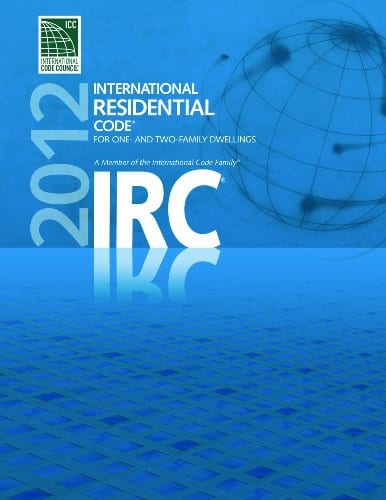2012 International Residential Code for One- and Two- Family Dwellings (International Code Council Series) 1st Edition
$131.99
This comprehensive code compiles all building, plumbing, mechanical, fuel gas and electrical requirements for one- and two-family dwellings in one convenient code.
In stock
Product Details
This comprehensive code compiles all building, plumbing, mechanical, fuel gas and electrical requirements for one- and two-family dwellings in one convenient code. The regulations cover dwellings and townhouses up to three stories. Now in its fifth edition, the IRC contains many important changes including:
A new Seismic Design Category (SDC) map that results in smaller SDC E regions. Some previous SDC E areas will now be SDC D2.
A new wind map delineates areas requiring design to resist wind forces.
A new map identifies windborne debris regions.
A new table for minimum fire separation distance for dwellings equipped throughout with an approved automatic sprinkler system. The new table provides for reducing the fire separation distance for non-rated exterior walls from 5 feet to 3 feet. Also, a new section allows a sprinkled garage to take advantage of the reduced fire separation distance.
Doors between the garage and dwelling unit now require self-closing devices.
Wireless smoke alarms are now specifically permitted for satisfying the interconnection requirements in both new and existing dwelling units.
The provisions for roof connections to resist wind uplift forces have been updated and simplified. A new table provides prescriptive values for both low and high slope roofs in wind exposure categories B and C.
When a parapet is not installed, openings and penetrations of the roof are no longer permitted within 4 feet of the separating wall between townhouse dwelling units./li>
The IRC now includes prescriptive provisions for the construction of isolated masonry pier foundations supporting raised floor systems.
Installation of ½-inch gypsum board or equivalent is now required on the underside of floor assemblies of cold-formed steel framing, I-joists, open web trusses and similar light-frame members.
The IRC Wall Bracing provisions have been completely reorganized to place each topic in a separate section and improve the flow of information.
New simplified wall bracing provisions offer an alternative method of bracing in low seismic regions with basic wind speeds of 90 mph and exposure category A or B.



